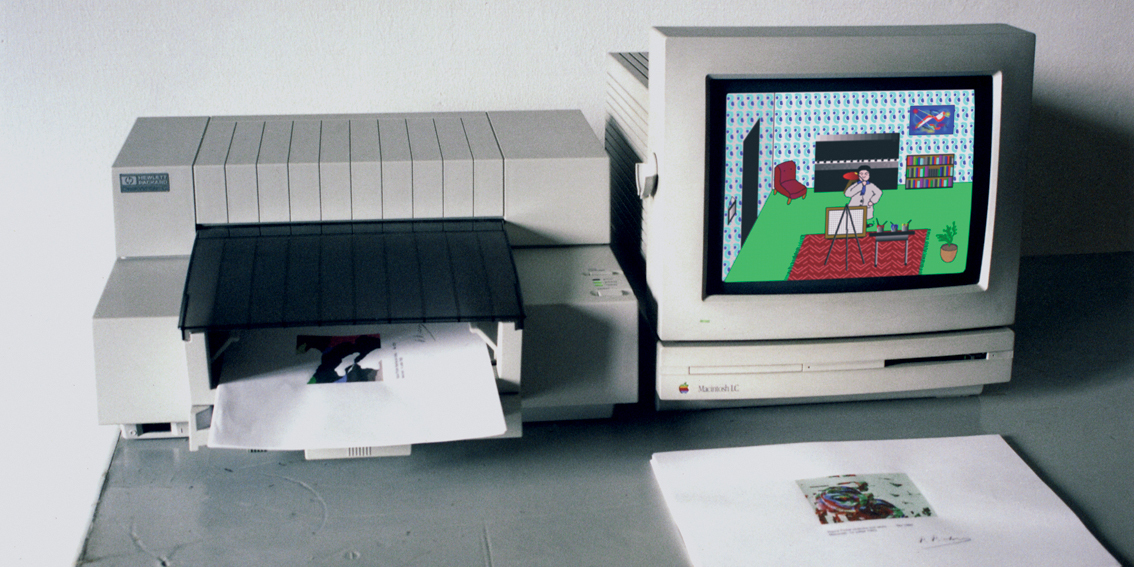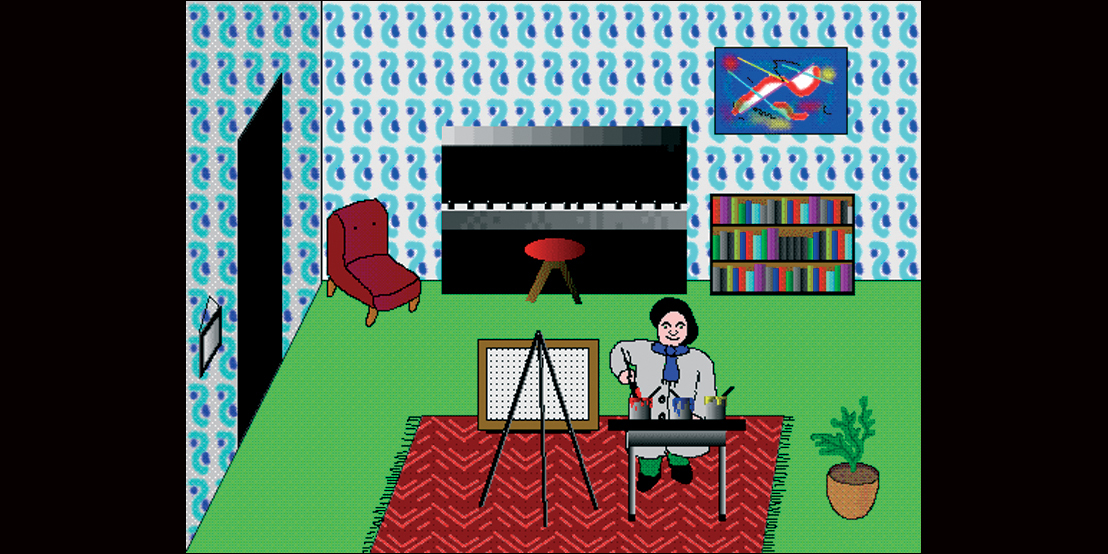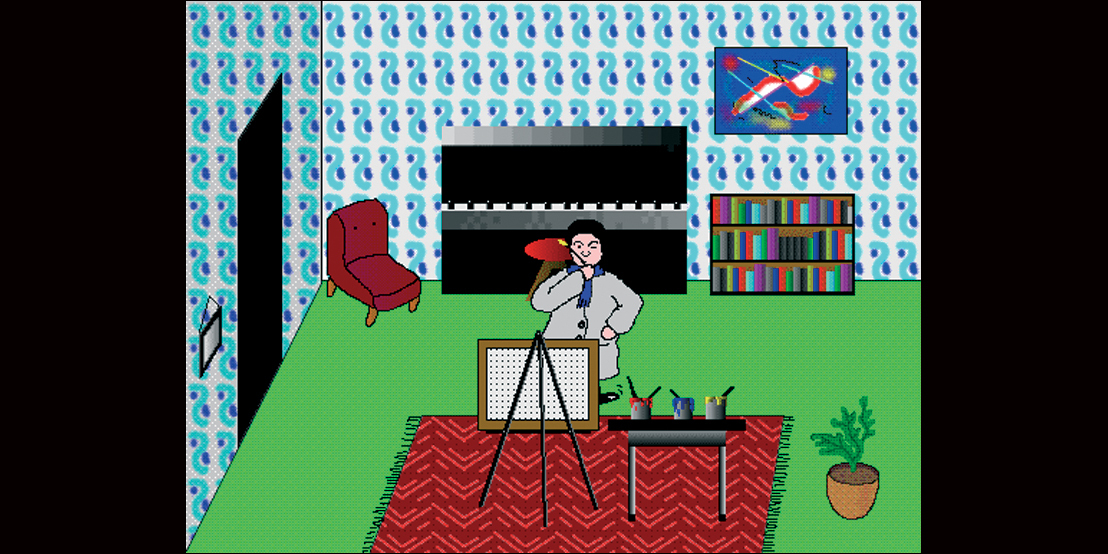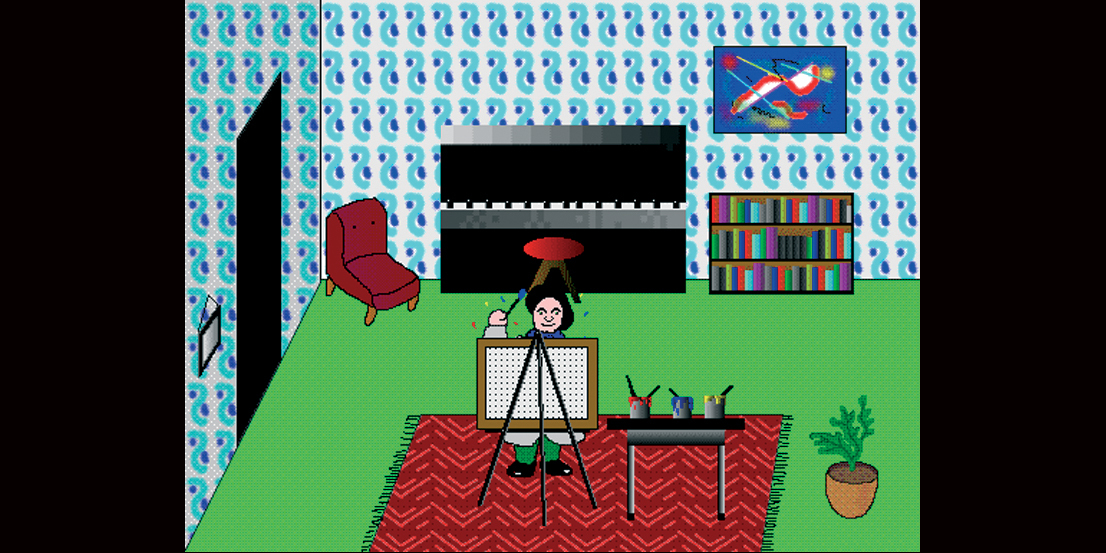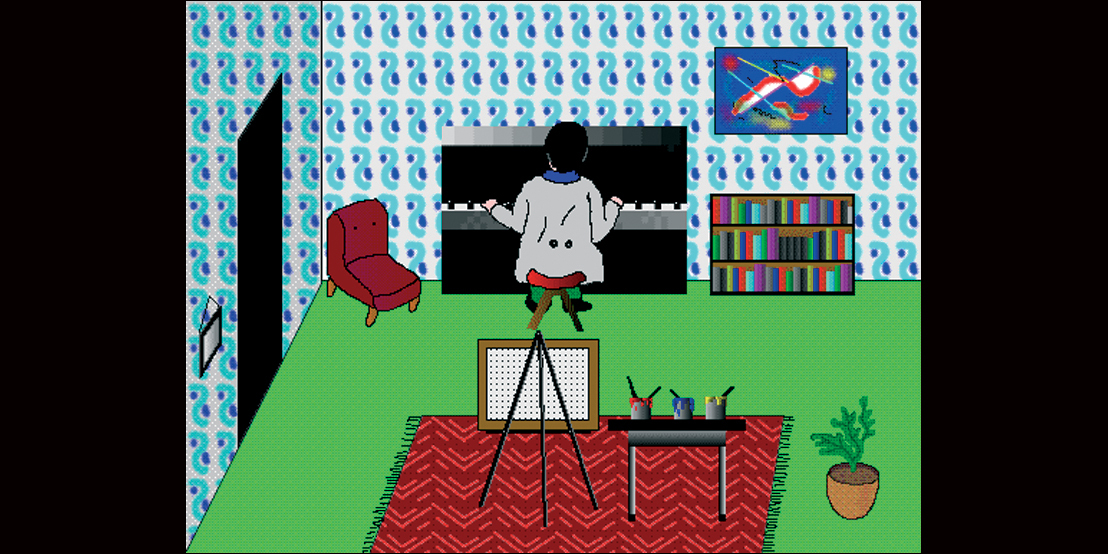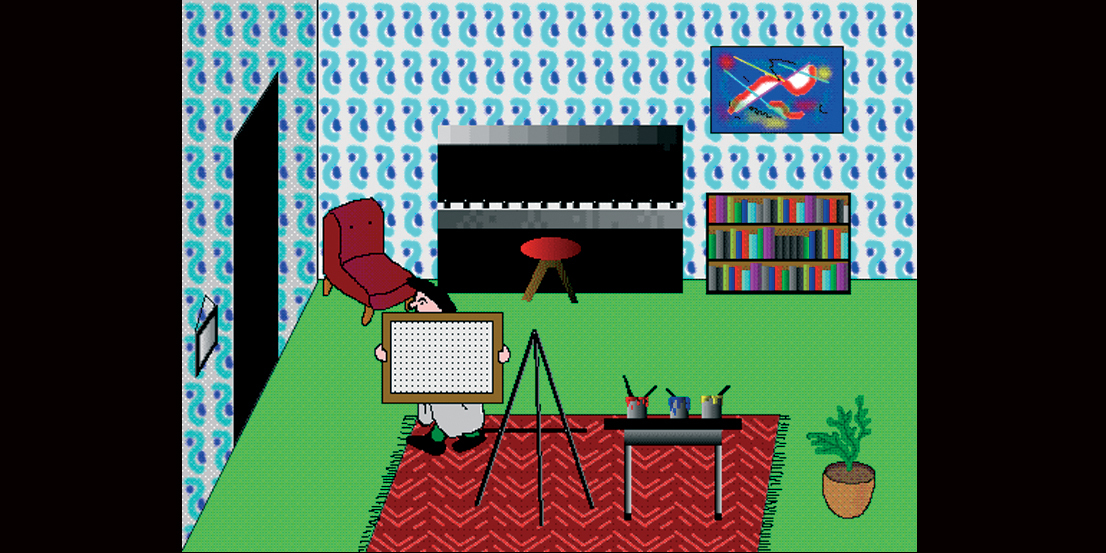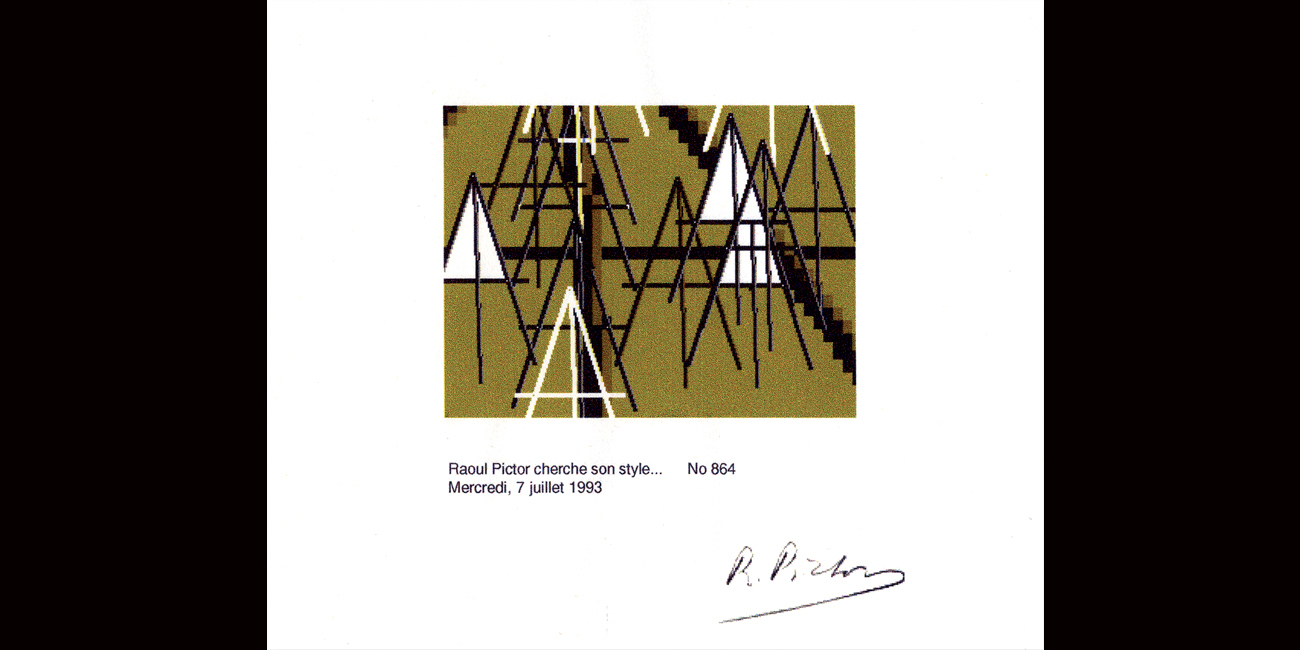Hervé Graumann
Raoul A. Pictor cherche son style
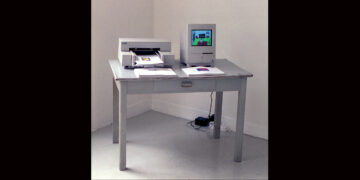
On the tiny monitor of a Macintosh Colour Classic Computer, Hervé Graumann created a painstakingly detailed artist's studio for his protagonist Raoul A. Pictor, upon whose artistic activity he has continued to expand in subsequent years.
In the foreground, an easel is set up on a bilious green studio floor with its back to the viewer; beside it is a small table with buckets of red, blue and yellow paint. On the wall, with its oscillating op-art wallpaper pattern, hangs one of Raoul's works, which allows us a glimpse of his abstract formal language – a mixture of Kandinsky and Miro. From the process of creation of individual works, one sees especially the search for artistic inspiration and the maintaining of creative pauses, whose length largely determines the rhythm of the image production. In a lovingly ironic way, Graumann draws on all the stereotypical ideas about the kiss of the muse that awakens the genius of the artist: the aimless walk across the carpet, the brooding piano playing, the resting in the armchair or the contemplation of edifying books. Raoul himself, with his artist's scarf, low-sitting beret and gray painter's smock, displays almost all the accessories of the classic modern artist. After the repeating rituals have ended and the painting is completed, Raoul carries it – still with its back to the viewer – out the door. His creation is now available to use as one wishes, in the form of a dated and signed A4 printout from the color printer next to the computer.
Thanks to the detail-rich programming of a cliché of author-supported picture production in the heyday of painting, the digital breakthrough in the depiction – for example, through the childish sounds of the piano playing, the knocking of brushstrokes on the canvas, the staccato-like movements or the garish colors – is all the more charming and self-ironic. From the media-reflective breakthrough emerge unique signed digital artworks whose code can be altered as desired. The programming language replaces the kiss of the muse.
(Text: Bettina Back)

